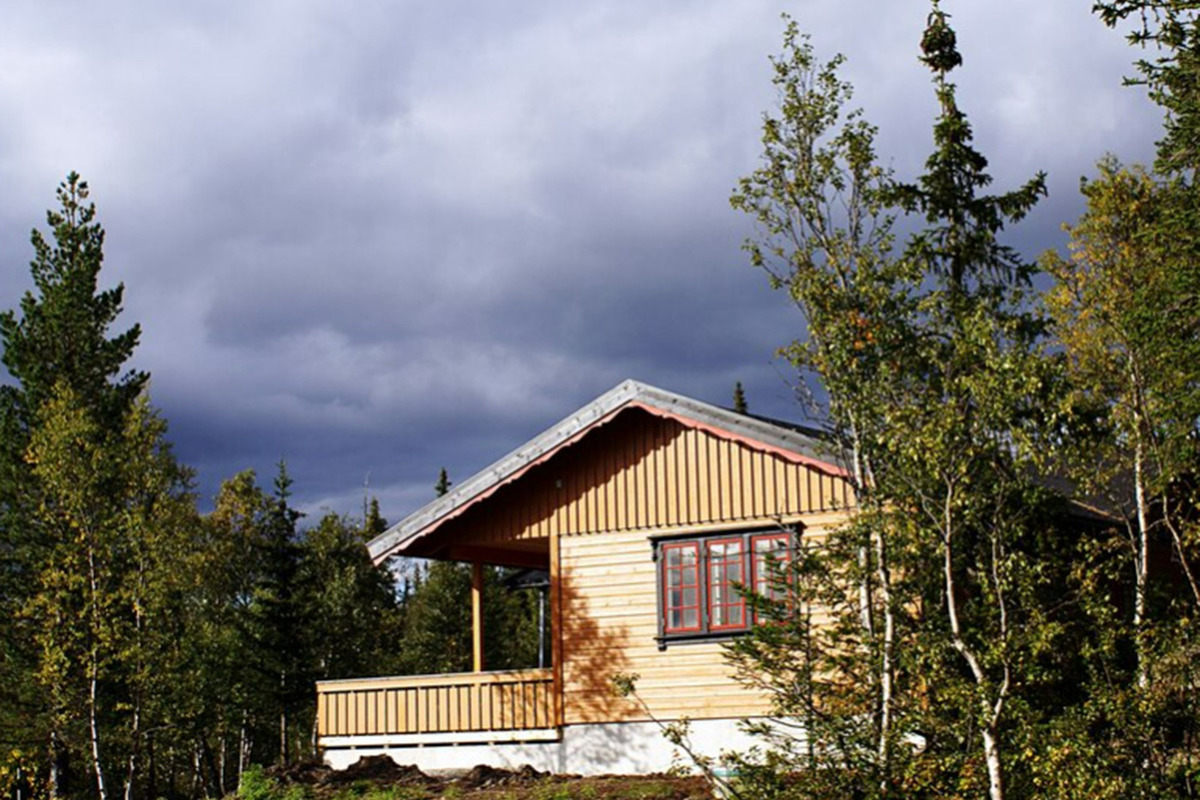The season for technology replacement has begun in the suburban housing market
[ad_1]

Large two-story country residences, built from laminated veneer lumber, rounded logs and ceramic blocks, have lost their former charm in the eyes of most buyers. Today, the favorites of the Russian countryside housing market include light frame cottages built using Finnish or Canadian technologies, as well as Chinese container houses. The trend for the construction of small modern satellite cities, which are intended to become an alternative to human skyscrapers, is gaining momentum.
In 2023, a record 110,438.5 thousand square meters were commissioned in the country. m of housing (+7.5% compared to 2022), said Deputy Prime Minister of the Russian Federation Marat Khusnullin. Of these, more than half, about 59 million sq. m, accounted for individual housing construction (IHC). And there are no objective prerequisites for a decrease in consumer interest in private houses outside megacities.
According to experts interviewed by MK, Russians are ready to continue investing in real estate outside the city. Both for your own residence (even in the summer, at least permanently), and as an investment. “Yes, not every family can afford such a purchase now. These are not cheap objects, not only to purchase, but also to maintain. But for many citizens, especially in the capital, the price of a new cottage or townhouse in the near Moscow region becomes comparable to the cost of an apartment in a 20-year-old high-rise building,” noted Konstantin Zlobin, development director of Asterra.
But from the point of view of comfort, in his opinion, many country projects are much more interesting than apartments on the secondary market. First of all, priority is given to houses and settlements that are being built under the program of integrated development of territories. All the infrastructure familiar to city residents is being created here – from kindergartens, schools and clinics to shops, gyms and shopping centers. As a result, you don’t need to travel anywhere, everything is within walking distance.
Large investors, most often in the form of closed-end real estate mutual funds, entered into suburban construction. “The Central Transport Hub (CTU) will soon open in Moscow and neighboring regions, which means that land in the areas of Sergiev Posad, Tver, Klin, Kashira, Serpukhov, Kolomna (see map) will become more expensive, because these territories will be actively developed. This also attracts private investors and leads to increased demand for land in these areas,” noted Olga Blagoveshchenskaya, co-founder and co-chair of the Confederation of Future Cities.
As Vasily Kurbatskikh, the author of the “L-Town” project near Chelyabinsk, noted, the modern buyer has become more demanding. In addition to the number of square meters and the location of rooms, people are increasingly paying attention to what is “outside the door.” They want to live where there are beautiful, safe streets and courtyards, cozy, well-maintained public spaces, and clean air. The trend for the construction of small modern satellite towns, which are intended to become a healthy alternative to the “humane villages” and Americanisms in individual housing construction, is gaining momentum,” Kurbatskikh added.
According to Blagoveshchenskaya, the rental strategy is in high demand, as well as housing in good villages with developed internal infrastructure, where everything is available: schools, kindergartens, and so on. People are leaving there because the transport interchange is becoming more accessible: toll roads are being opened, new roads are being built, and trains are running.
Zlobin has a different point of view. According to his assessment, at the moment, plots without a contract are the most profitable format in the suburban real estate market for both developers and buyers. For the former, this removes construction risks and increases margins, and for the latter, it allows them to fit into the budget, including the mortgage. In addition, you can choose the design of your future home yourself.
According to DOM.RF, the average area of an individual house in 2023 was 142 square meters. This year, experts believe, the most in demand are one-story houses with an area of about 90 square meters and three rooms. “Oddly enough, big houses are no longer in fashion at all, they are not relevant. There is a great demand for frame houses: they are inexpensive and can be installed very quickly,” Olga Blagoveshchenskaya emphasized. According to her, Chinese container houses are now entering the Russian suburban housing market, which can be quickly installed and completed as necessary. For example, if a child is born, place a second container nearby. And behind him a third, if necessary. That is, the house can be assembled like a construction set.
Until the end of the year, prices for suburban housing at home will rise both against the backdrop of rising prices for materials and against the backdrop of rising land prices, especially at the points of new central distribution centers, Olga Blagoveshchenskaya is sure.
According to Konstantin Zlobin’s forecast, in the first half of 2024 alone, country houses will rise in price by 10–20%, depending on the project. Most likely, growth will continue further. The high interest in individual housing construction will also be supported by preferential government programs. So far it is known that the family mortgage will definitely be extended, which will provide country house builders with quite predictable demand. And if the remaining programs are extended in the future, the individual construction segment may become the driving force of the industry. According to TASS, mortgages on individual housing construction should reach at least 30% of the total volume of housing lending in the country by 2030. The authorities plan to maintain the rate of commissioning of private houses at the level of 50 million square meters. m. per year.
[ad_2]
Source link






